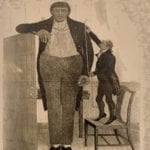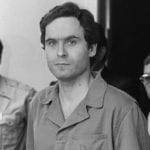 Mysteries
Mysteries  Mysteries
Mysteries  History
History 10 Surprising Stories About the Texas Rangers
 Humans
Humans 10 Philosophers Who Were Driven Mad by Their Own Theories
 Miscellaneous
Miscellaneous 10 Video-Game-Worthy Weapons and Armors from History
 Weird Stuff
Weird Stuff 10 Psychics Who Accurately Predicted Wartime Events
 The Arts
The Arts 10 Pieces of Art Inspired by a Broken Heart
 Health
Health 10 Science Fiction-Sounding New Medical Treatments
 History
History 10 Surprising Facts About the Father of Submarine Warfare
 Space
Space Ten Astonishing New Insights into Alien Worlds
 Weird Stuff
Weird Stuff 10 Bizarre Summer Solstice Rituals Still Practiced Today
 Mysteries
Mysteries Top 10 Haunting Facts About the Ghost Ship MV Alta
 History
History 10 Surprising Stories About the Texas Rangers
 Humans
Humans 10 Philosophers Who Were Driven Mad by Their Own Theories
Who's Behind Listverse?

Jamie Frater
Head Editor
Jamie founded Listverse due to an insatiable desire to share fascinating, obscure, and bizarre facts. He has been a guest speaker on numerous national radio and television stations and is a five time published author.
More About Us Miscellaneous
Miscellaneous 10 Video-Game-Worthy Weapons and Armors from History
 Weird Stuff
Weird Stuff 10 Psychics Who Accurately Predicted Wartime Events
 The Arts
The Arts 10 Pieces of Art Inspired by a Broken Heart
 Health
Health 10 Science Fiction-Sounding New Medical Treatments
 History
History 10 Surprising Facts About the Father of Submarine Warfare
 Space
Space Ten Astonishing New Insights into Alien Worlds
 Weird Stuff
Weird Stuff 10 Bizarre Summer Solstice Rituals Still Practiced Today
10 Strange Attempts To Create A Real-Life Gaydar
In the 1950s, there was a real danger afoot. The Communists, as our brave senators warned us, had infiltrated the governments of the democratic world. And they’d brought with them their most powerful weapon: the gays.
As Senator Kenneth Wherry told the American people, “Only the most naive could believe that the Communists’ fifth column in the United States would neglect to propagate and use homosexuals to gain their treacherous ends.” We needed a device that could weed out these wily gays from their patriotic hetero peers. Our mission was clear: we needed a real-life, fully functioning gaydar.
The best minds in the world got to work. And they didn’t stop in America in the 1950s—in many parts of the world, our best and brightest are to working to build one today.
10 The Hoey Committee’s Investigative Techniques
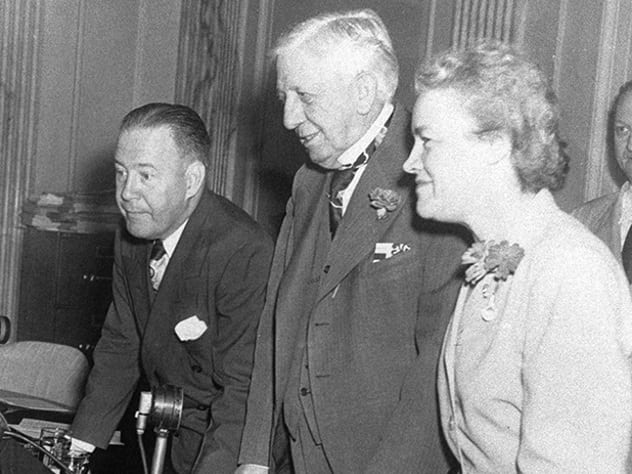
In 1950, the best and brightest minds of the US Senate were organized into a special task force called the Hoey Committee. Their mission: to identify and root out the insidious gays hiding throughout America.
It would not, as they quickly learned, be as easy as they imagined. Senator Margaret Smith, during a meeting with America’s top medical minds, disappointedly asked: “There is no quick test like an X-ray that discloses these things?”
To her heartbreak, the surgeon general explained that homosexuality didn’t show up on most X-rays. He, at least, was answering their questions. Most medical experts, for some reason, rambled on with some nonsense about sexuality being “complicated” and “fluid” and refused to hand over the machine the senators apparently hoped would make all gay men in America start glowing with a neon red light.
After two years of research, though, the Hoey Committee identified some foolproof facts about homosexuals. Gay men, they announced, could be identified through a few key clues: They were unmarried, they “seldom refuse to talk about themselves,” and they tended to have what the council called “prissy habits.”
They started a complex system for tracking, eliminating, and destroying the lives of gay men, often crushing them so fully that they drove them to suicide.
And not a moment too soon. As their report warned, gay was contagious: “One homosexual can pollute a government office.”[1]
9 The Canadian Government’s Fruit Machine
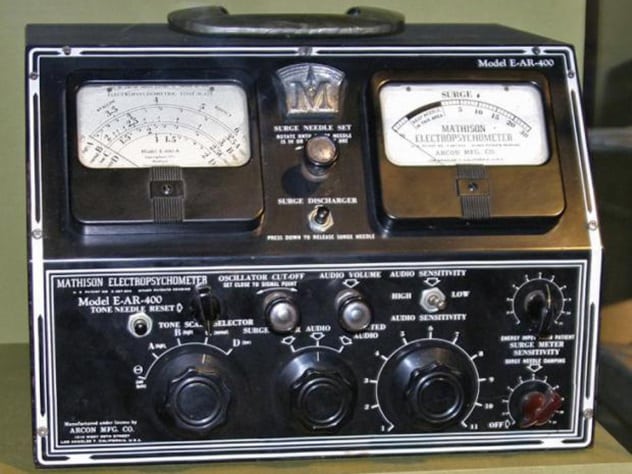
North of the border, the Canadians were hard at work on a special machine that they were convinced could identify any gay man. They called it the “Fruit Machine,” which, in the 1960s, was something you could name a machine, and nobody would say anything. In fact, the government would pay you $10,000, and everything would be fine.
It was a gigantic device, described by those who have seen it as looking “like something out of science fiction.”[2] It had multiple cameras, giant steel girders, and a special screen designed to project gay porn.
A suspected homosexual would be called into the security official’s office and told: “We have evidence that you may be a homosexual. What do you have to say about this?”
If they denied it, the Fruit Machine would be their judge. They would be strapped in and shown a series of mundane images which, every now and then, would be livened up with the odd picture of gay porn. While they watched, the researchers would measure their pulse, skin reflexes, breathing, and pupillary response.
If your pupils expanded on the sight of gay porn, it meant that the pictures of naked men excited you. Or that the photo was a bit too dark for you. Or maybe that you were surprised. Or probably really nothing at all, since most tests showed that the Fruit Machine was wildly ineffective.
Still, the Canadian government was nothing if not cautious. Even if the machine didn’t work, they forced everyone who failed its test to resign from their jobs, thereby saving Canada from the horrors of having homosexuals walk through its streets leading normal, healthy lives.
8 The US Park Police’s Pervert Records
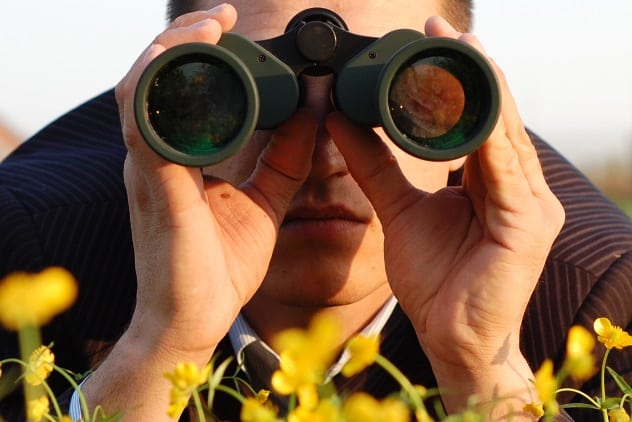
The United States Park Police played a special role in America’s mission to weed homosexuals out of government. They were put on a special task force when the government received some prized intel providing an insight into the mind of the homosexual man: Gay guys love parks.
The Park Police were expanded, with countless more officers brought on to help them with their missions, including weeding out “sex perverts.” Parks, the government had learned, were “popular cruising spots for gay men.” They needed a team to watch them.
One group of Park Police spent 12 hours, from dusk to dawn, staring at the bathroom in Lafayette Park and placing bets on whether or not the visitors were gay. In their report to Congress, they declared: “I do not believe a half a dozen legitimate persons go in there to answer Nature’s call.”[3]
Thanks to their tireless work, the US government came to an important conclusion: Pretty well anyone who goes to the bathroom in a public park can be assumed to be a homosexual. And they took that intel seriously, even firing a CIA employee on the charge that he’d been spotted “hanging around the men’s room in Lafayette Park.”
7 J. Edgar Hoover’s Sex Deviates Program
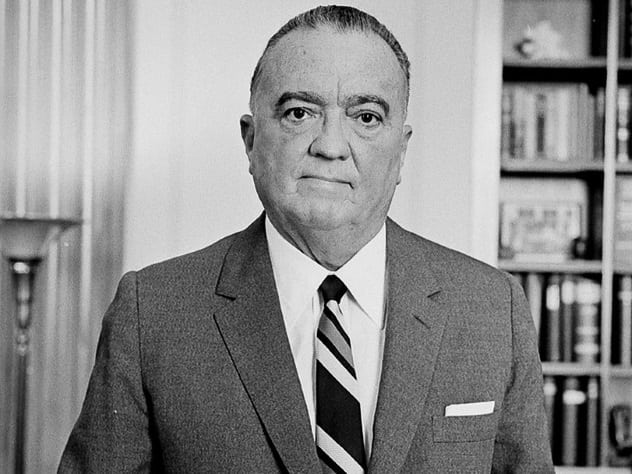
J. Edgar Hoover personally pushed the FBI into leading what he called the “Sex Deviates” program. For decades, they would stop wasting so much time tracking down organized crime and domestic terrorists and, instead, focus their resources on America’s real threat: the gay menace.
Any person accused of being a closeted homosexual, on the FBI’s orders, was to be immediately reported to the chief of investigations.[4] The FBI would take over from there, and they would put every resource at their disposal to work. FBI agents would follow men to their homes, keep tabs on which bars and restaurants they ate at, and have professional psychologists examine detailed records of their habits, searching for those telltale patterns of gayness.
Then they’d strike. Some eager FBI agents would pull the suspected homosexuals in early, while they were still just loitering outside those notorious park bathrooms. The truly diligent, though, would wait until they were the middle of what they called “an act of perversion” and until they’d gotten really good photographs of the act before bringing them in.
It was hard work, or work that made them hard, or one of those two—but it had to be done. Nobody understood that more than J. Edgar Hoover. After all, if the rumors about Hoover are true, he had an unfortunate habit of showing up at homosexual orgies—clear proof that those contagious gays had been coughing all over him.
6 The Gulf Cooperation Council Homosexuality Test

The quest for a foolproof way to spot gays didn’t end with the 1950s, and it wasn’t limited to the United States. Decades later, in 2013, Kuwait’s director of public health, Yousuf Mindkar, took up the cause himself.
Mindkar promised his people that he would introduce sweeping reforms to improve the nation’s gaydar, declaring to the world: “We will take stricter measures that will help us detect gays.”
His plan was to revise Kuwait’s visa stipulations to require doctors to certify any incoming visitors as heterosexual before letting them into the country.[5] Mindkar wasn’t entirely clear on how the doctors would test their patients for homosexuality, but he was confident that it would be a simple procedure. He assured the press that any doctor in any country would be able to run a thorough test for the telltale physical markings of homosexuality.
Mindkar backed down because of criticism in the international community. FIFA expressed concern that his plan might bar some fans from watching the 2022 World Cup. The concern was echoed by many in the US, who suggested that the plan would bar everyone who likes soccer from entering Kuwait and then high-fived each other.
5 The Malaysian Guide To Spotting A Gay

A 2018 issue of Sinar Harian, a Malaysian newspaper, came with a helpful checklist to teach readers “how to spot a gay.”[6]
The article came with a checklist of the classic telltale markings of homosexuality. Gay men, it explained, love beards. They also love branded clothing, are close to the family, and like to go to the gym. But once in the gym, it warned, the homosexual male will not exercise. Instead, he will merely ogle the other men, his eyes lighting up with joy whenever he spots a particularly handsome one.
Lesbians, it said, could be detected through their venomous attitudes toward men. Toward women, the article explained, lesbians are open and carefree. They will hold each other’s hands and hug each other openly. But they behave very differently around men. Lesbians, the article explained, hate men. What little joy they get out of life, they get from belittling them.
4 The Scientific Study Into Gay Faces
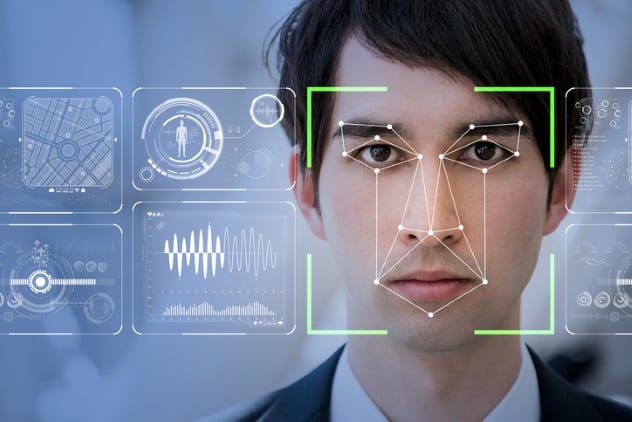
In 2008, Nicholas Rule and Nalini Ambady of Tufts University conducted an experiment into one of the great questions that have plagued scientists for centuries: Do gay people have gay faces?[7]
They took pictures of heterosexual and homosexual people, carefully chosen to eliminate the effect of what they called “self-presentation.” They even Photoshopped out their hair and pasted them onto white backgrounds, trying to leave nothing but their cheekbones and eyebrows as hints into their sexuality. Then they showed the pictures to a group of 90 people and asked them to guess which faces were gay.
The participants, Rule and Ambady claimed, got the right answer more often than not, thereby proving that everyone can tell you’re gay just by looking at you (even if they don’t realize it). Apparently, you’re not fooling anybody, and you might as well drop the act.
3 Stanford University’s Gaydar Machine
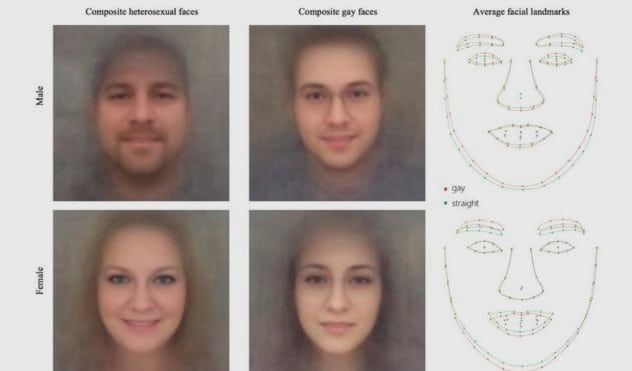
In 2017, Stanford professor Michael Kosinski took spotting gay people by looking at their faces into the next era. He turned that idea into what he claims is a working “gaydar” machine.
Kosinski and his coauthor, Yilun Wang, had a facial recognition program scan 75,000 online dating profiles, organized into groups of “gay” and “straight.” Their AI was programmed to identify patterns in “gay facial features,” searching for the unique quirks that unite all gay men. Then they pitted their machine against humans to see who was better at identifying homosexuals.
The humans weren’t much better at telling if someone was gay by looking at their face than a coin flip, which sort of ruins the entire point of the study in that last entry, but anyway, the point is that the machine got it right 81 percent of the time for gay men and 74 percent for lesbians.[8] Finally, they had created an effective gaydar.
Or, at least, it was an effective gaydar when it looked at people’s Tinder profile pictures. When they tried using it on pictures that people hadn’t put up on dating apps, it was significantly less effective. Still, they had finally developed a machine that could identify the sexuality of people who are actively and deliberately trying to make their orientations as visible as possible.
2 The Attempt To Isolate The Gay Gene

During the 2015 conference of the American Society of Human Genetics, a University of California researcher named Tuck Ngun made a bold declaration to the world: He had isolated the gay gene.[9]
Specifically, Ngun had found “methylation marks” that he believed could be connected to homosexuality. His study had looked at 37 pairs of identical male twins that consisted of one homosexual brother and one heterosexual brother and identified five methylation marks that he claimed were clear biological indicators of homosexuality.
Sort of. The scientific community wasn’t exactly supportive. They pointed out that he looked at 6,000 methylation marks in just 37 sets of twins, which made it pretty much inevitable that he’d be able to find some kind of pattern between them, just by the sheer law of averages. And in this case, Ngun hadn’t even found a particularly good pattern—even in his test subjects, the “gay gene” he’d identified only showed up in 67 percent of the time.
1 Penile Plethysmograph
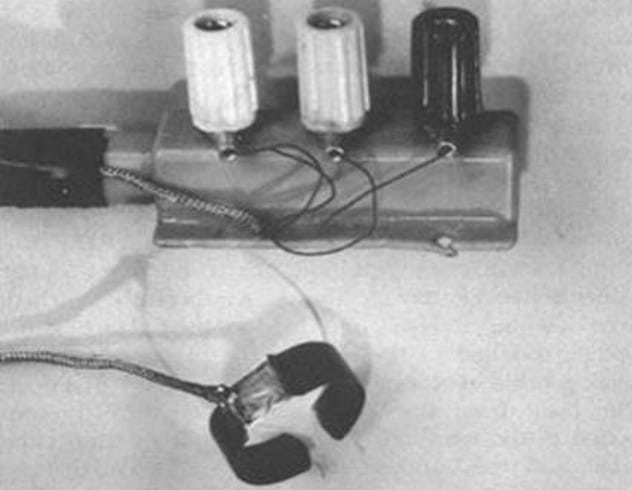
Some devices that have been employed as gaydars still see fairly widespread use today, like the penile plethysmograph. The Czechoslovakian Army once used it to determine if men claiming to be gay to avoid being drafted were telling the truth.
Here’s how it works: first, a scientist attaches a device shaped like a thin strip of metal to the penis. Then he puts on a variety of gay pornography (or whatever else they’re attempting to determine the subject’s response to) and uses the device to measure how erect the man gets looking at each image.
Admittedly, there are probably easier ways to figure out someone’s sexuality—like, for example, if a man attaches a thin strip of metal to people’s penises, shows them gay porn, and then takes careful notes on how erect they get, it might be a clue that he himself is gay—but somehow, this one has caught on and is still used in various scientific studies today.
It has been hailed as the most accurate sexuality test known to man—and with good cause. This test has proven to be an accurate determinant of a man’s sexual preferences 32 percent of the time,[10] making it the most effective, proven way to tell somebody’s sexuality—other than flipping a coin.
Read more suppositions about who might have been gay on Top 10 Ways We Have Tried Identifying Gay Men and 10 Historical Figures Who May Have Been Gayer Than You Think.


